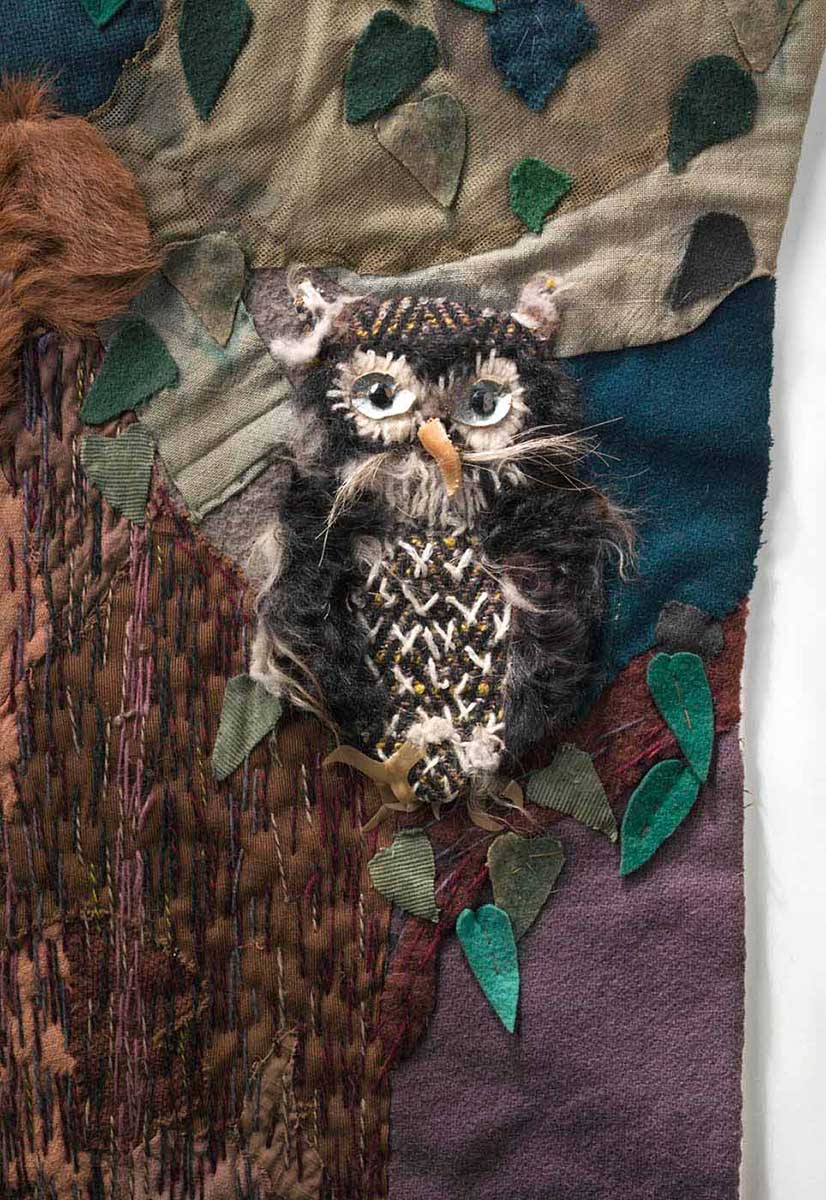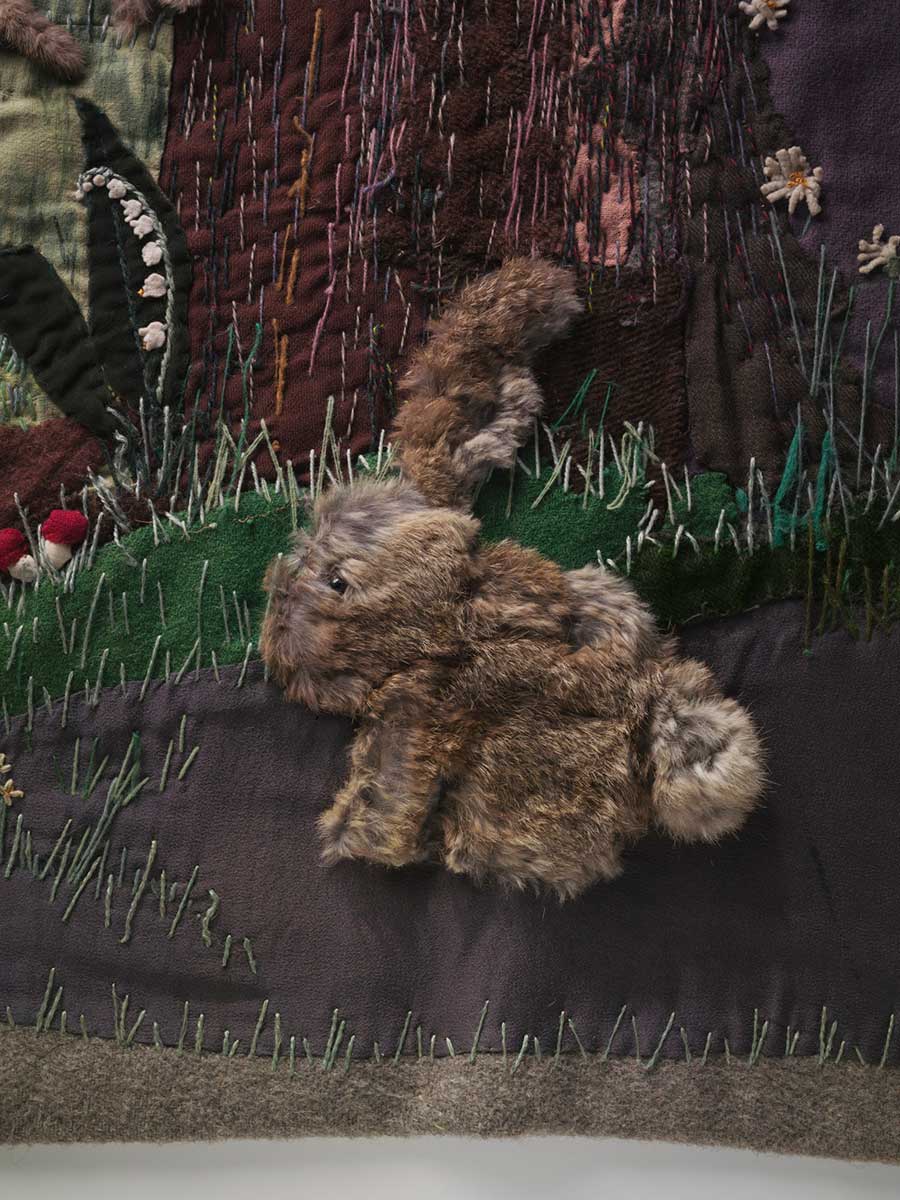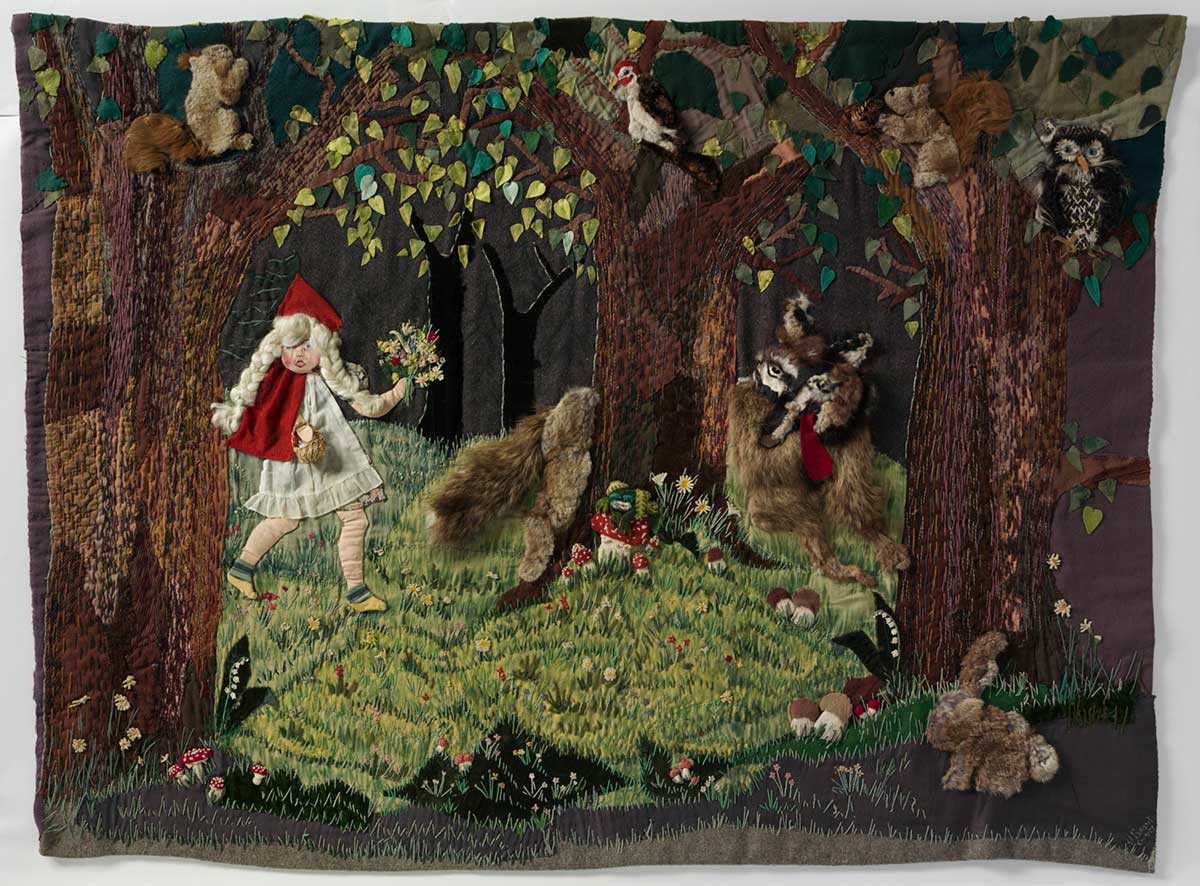A wall-hanging depicting a scene from the children's tale Little Red Riding Hood illustrates a rich story of migration and appreciation in the aftermath of the Second World War.
Scraps of fabric, felt and fur
The hanging was created in Germany by Ukrainian refugee Olga Basylevich, using a United Nations blanket and scraps of fabric and fur. It came to Australia via Valerie Paling, an Australian teacher who worked for the United Nations Relief and Rehabilitation Administration.
Her job was to help resettle some of the thousands of people displaced during the war. Paling received the Little Red Riding Hood wall-hanging in appreciation for her work at a displaced persons camp near the town of Ulm.
When Paling returned to Australia she presented the wall-hanging to the Forest Hill Kindergarten in Melbourne, where it was displayed until 1990. The wall-hanging was then donated to the National Museum of Australia.

Basylevich used a variety of fabrics and techniques to create the Little Red Riding Hood wall-hanging.
A grey blanket issued to her by the United Nations forms the backing.
The forest scene was crafted using fabric, felt, different types of animal fur, paper and a pine cone.
The bark on the trees was worked in long stitch. Basylevich also used stumpwork, where fabric is padded before being sewn onto the backing, to create a three-dimensional effect.
Along with Little Red Riding Hood and the wolf, the finished work shows squirrels, birds, wildflowers, mushrooms, a frog and a rabbit in the forest.

Camp connections
Little is known about the wall-hanging's maker, Olga Basylevich.
A typed note which accompanied the work at Forest Hill Kindergarten notes Basylevich and her poet husband lived at a displaced persons camp. It also says that Olga traded cigarettes for some of the materials used in the hanging.
Basylevich is known to have migrated to the United States but neither she nor her descendants have been traced.
Valerie Paling spent six years working in displaced persons camps in Europe after the Second World War. She encouraged refugees to develop skills such as tailoring, embroidery, English and car maintenance.
Paling became a camp director with the International Refugee Organisation before she returned to Australia.
Kindergarten home
The Little Red Riding Hood wall-hanging was displayed in the entrance hall of the Forest Hill Kindergarten.
It was cared for by kindergarten worker Bette Jones, who took it home for repairs each year until 1990. A note pinned to the back of the wall-hanging details Mrs Jones' repairs in 1975:
I added some felt leaves in place of those which had fallen off and to give the design some new 'life'.
I added a basket made from twine and a small cloth with embroidery. Apart from those and a piece of net at the top to hold the design where it was showing signs of wear, the hanging is in its original condition.
I added a basket made from twine and a small cloth with embroidery. Apart from those and a piece of net at the top to hold the design where it was showing signs of wear, the hanging is in its original condition.
When the kindergarten closed in 1990, the wall-hanging was donated to the National Museum of Australia.
Little Red Riding Hood animation
An animation of the Grimm Brothers' 1812 version of the Little Red Riding Hood story, based on the wall-hanging.
In our collection
